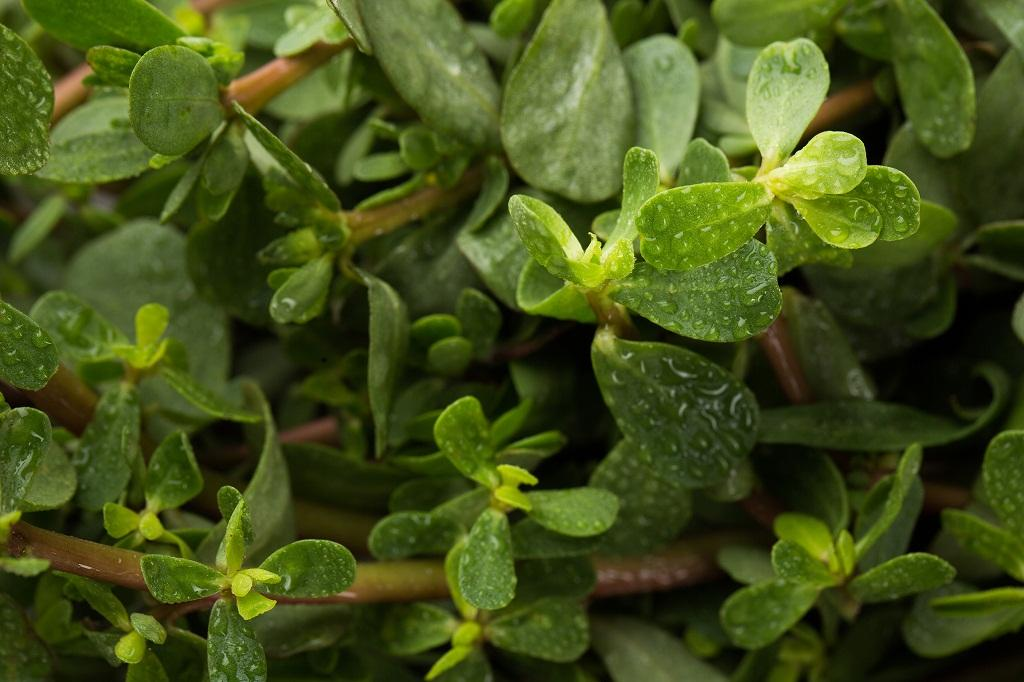Important Facts For Prelims
Drought Tolerant Crop
- 22 Aug 2022
- 5 min read
Why in News?
Recently, a study has noted that a common weed named “Portulaca oleracea”, commonly known as purslane, offers important clues about creating drought-tolerant crops in a world beset by climate change.
- Yale University scientists integrated two metabolic pathways to produce a novel type of photosynthesis that enables the weed to withstand drought while remaining highly ‘productive’.
What do we know about Purslane?
- About:
- Purslane possesses evolutionary adaptations that allow it to be both highly productive and drought tolerant.
- Description:
- It is mostly an annual, but it may be perennial in the tropics.
- Stems are glabrous, fleshy, purplish-red to green, arising from a taproot, often prostrate, forming mats.
- Distribution:
- It is most common in the temperate and subtropical regions, although it extends into the tropics and higher latitudes.
- Habitat:
- It is common in fields, gardens, vineyards, lawns, driveways, dunes, beaches, salt marshes, waste areas, eroded slopes, bluffs and riverbanks.
- Species Affected:
- It competes for resources with many field crops, particularly herbaceous species that are germinating or growing in competition.
- Affected crops include: asparagus, red beets, celery, crucifers, cotton, maize, onions, potatoes, rice, soyabeans, sugarcane, tomatoes and wheat.
- Ecology:
- It has a wide tolerance of photoperiod, light intensity, temperature, moisture and soil type.
- Seeds germinate under conditions that enhance the survival of seedlings.
- The species is self-compatible.
What are the Key Highlights of the Study?
- Plants have independently evolved various mechanisms to improve photosynthesis, the process by which green plants use sunlight to synthesise nutrients from carbon dioxide and water.
- Corn and sugarcane evolved C4 photosynthesis, which allows the plant to remain productive under high temperatures.
- Succulents such as cacti and agaves possess another type called CAM photosynthesis, which helps them survive in deserts and other areas with little water.
- Both C4 and CAM serve different functions but recruit the same biochemical pathway to act as ‘add-ons’ to regular photosynthesis.
- The study conducted a spatial analysis of gene expression within the leaves of purslane and found that C4 and CAM activity is totally integrated.
- They operate in the same cells, with products of CAM reactions being processed by the C4 pathway.
- This system provides unusual levels of protection for a C4 plant in times of drought.
- They operate in the same cells, with products of CAM reactions being processed by the C4 pathway.
What are C3, C4, and CAM plants?
- C3 Cycle:
- It is also known as Calvin Cycle.
- It is a cyclic reaction occurring in the dark phase of photosynthesis.
- In this reaction, CO2 is converted into sugars and hence it is a process of carbon fixation.
- The Calvin cycle was first observed by Melvin Calvin in chlorella, unicellular green algae. Calvin was awarded Nobel Prize for this work in 1961.
- Since the first stable compound in Calvin cycle is a 3 carbon compound (3 phosphoglyceric acid), the cycle is also called as C3 cycle.
- C3 plant examples: Wheat, Oats, Rice, Sunflower, Cotton etc.
- C4 Plants:
- The C4 plants show a different type of leaf anatomy.
- The chloroplasts are dimorphic in nature. In the leaves of these plants, the vascular bundles are surrounded by bundle sheath of larger parenchymatous cells.
- These bundle sheath cells have chloroplasts.
- These chloroplasts of bundle sheath are larger, lack grana and contain starch grains.
- The chloroplasts in mesophyll cells are smaller and always contain grana. This peculiar anatomy of leaves of C4 plants is called Kranz anatomy.
- Examples of C4 plants: Maize, Sugarcane, Amaranthus.
- CAM Cycle:
- CAM is a cyclic reaction occurring in the dark phase of photosynthesis in the plants of Crassulaceae.
- It is a CO2 fixation process wherein the first product is malic acid.
- It is the third alternate pathway of Calvin cycle, occurring in mesophyll cells.
- CAM plants are usually succulents and they grow under extremely xeric conditions. In these plants, the leaves are succulent or fleshy.
- In these plants, the stomata remain open during night and closed during day time.
- The CAM plants are adapted to photosynthesis and survival under adverse xeric conditions.
- Examples: Sedum, Kalanchoe, Pineapple, Opuntia, Snake plant.
- CAM is a cyclic reaction occurring in the dark phase of photosynthesis in the plants of Crassulaceae.







